How to Calculate Fence Installation Costs
When it comes to calculating fence installation costs, remember the saying ‘measure twice, cut once.’ Ensuring accuracy in your estimations is crucial for a successful project.
By understanding the key factors influencing expenses, such as material choices, labor rates, and any unforeseen add-ons, you can develop a comprehensive budget plan.
But how do you navigate these variables to arrive at an accurate total cost? Stay tuned to uncover practical tips and strategies to help you confidently plan and execute your fence installation project within budget.
Factors Affecting Fence Installation Costs
When estimating the cost of fence installation, various factors significantly influence the final pricing.
The first key factor to consider is the type of material you choose for your fence. Materials such as wood, vinyl, chain-link, and aluminum each come with different price points, affecting the overall cost.
The size of your property plays a crucial role as well. Larger properties require more materials and labor, resulting in higher costs.
Another important factor is the terrain of your land. If your property has uneven ground or obstacles like rocks or trees that need removal, this will add to the installation complexity and cost.
Additionally, the style of the fence you select influences pricing. Intricate designs or custom features will increase the overall expenses.
Lastly, labor costs vary depending on the region, experience level of the contractors, and time of year. Understanding these factors will help you estimate your fence installation costs more accurately.
Estimating Material Expenses
To accurately estimate material expenses for your fence installation, carefully consider the type of material you plan to use and its associated costs. Here are some key factors to take into account:
- Material Type: The type of material you choose will greatly impact the overall cost of your fence. Common options include wood, vinyl, aluminum, and chain link, each with varying price points.
- Quantity Needed: Calculate the amount of material required based on the dimensions of your fence. This includes panels, posts, rails, and any additional components.
- Quality of Material: Higher quality materials often come with a higher price tag but may require less maintenance and have a longer lifespan, potentially saving you money in the long run.
- Additional Expenses: Don’t forget to factor in additional costs such as hardware, concrete for setting posts, finishing treatments, and delivery fees. These can add up quickly and impact your overall budget significantly.
Calculating Labor Costs
Considering the intricacies involved in fence installation, accurately calculating labor costs demands a meticulous breakdown of various key components.
Firstly, assess the size and complexity of the project. More complex designs or larger areas may require additional labor hours, impacting the overall cost.
Next, factor in the type of fence material being used as different materials require varying levels of expertise and time for installation.
Be sure to account for the experience and skill level of the laborers involved, as more experienced workers may command higher hourly rates but could potentially complete the job more efficiently.
Additionally, consider the location of the installation site, as accessibility and terrain can affect labor requirements.
Lastly, don’t overlook any special requirements such as demolition of existing structures or customization requests, as these can significantly impact labor costs.
Budgeting for Additional Expenses
Plan meticulously for unforeseen expenses by creating a detailed budget that includes room for additional costs beyond the initial estimates. When budgeting for your fence installation project, it’s crucial to consider various unforeseen expenses that may arise along the way. Here are some key factors to keep in mind:
- Permit Fees: Check with your local municipality to determine if you need a permit for your fence installation. Permit costs can vary, so it’s essential to factor this into your budget.
- Site Preparation: Clearing the installation site of debris, vegetation, or rocks may accrue additional costs. Be prepared for potential expenses related to site preparation.
- Property Survey: Hiring a professional to survey your property lines ensures your fence is installed in the correct location. Factor in survey costs to avoid any legal or property line issues.
- Material Overages: It’s wise to purchase slightly more materials than required to accommodate for any mistakes or unexpected needs during the installation process. Consider this when estimating material costs.
Total Cost Calculation and Tips
When calculating the total cost of your fence installation, ensure you account for all materials, labor, and additional expenses to avoid any financial surprises. Start by tallying up the costs of all necessary materials, such as the type of fencing material, posts, concrete, and any decorative elements.
Labor costs vary depending on the complexity of the installation, so obtain multiple quotes to compare prices. Don’t forget to include additional expenses like permit fees, equipment rentals, or any landscaping adjustments required for the installation.
To calculate a rough estimate, add up the costs of materials and labor, then factor in additional expenses. It’s wise to set aside a contingency fund of around 10% of the total estimate to cover any unforeseen costs that may arise during the installation process.
Frequently Asked Questions
What Are Some Common Mistakes to Avoid When Hiring a Fence Installation Contractor?
When hiring a fence installation contractor, avoid common mistakes by researching their experience, requesting multiple quotes for comparisons, verifying licenses and insurance, checking references, and having a detailed written contract outlining all aspects of the project for clarity and accountability.
Are There Any Specific Permits or Regulations to Consider When Installing a Fence in My Area?
To install a fence in your area, check local regulations and obtain necessary permits. Understand property lines, height restrictions, and material guidelines. Compliance ensures a smooth installation process and avoids potential fines or legal issues.
How Can I Determine the Best Type of Fence for My Property Based on Cost and Durability?
To determine the best type of fence for your property based on cost and durability, assess your budget, desired materials, maintenance needs, and local weather conditions. Research various options, consider long-term costs, and consult with professionals for guidance.
Are There Any Financing Options Available for Fence Installation Projects?
When considering financing options for fence installation projects, explore bank loans, home equity lines of credit, or financing plans offered by fencing companies. Compare interest rates, terms, and fees to find the best option for your budget.
What Are Some Tips for Maintaining and Prolonging the Lifespan of a Newly Installed Fence?
To maintain and prolong the lifespan of your newly installed fence, regularly inspect for damage, clean debris, apply protective sealant, keep vegetation trimmed away, and address any issues promptly. These steps ensure your fence remains sturdy and attractive.
Conclusion
In conclusion, when calculating fence installation costs, it’s crucial to consider factors such as materials, labor, and additional expenses.
By estimating material expenses accurately, calculating labor costs diligently, and budgeting for any unforeseen costs, you can ensure that you have a clear understanding of the total cost involved.
By following these steps and tips, you can make informed decisions and plan accordingly for your fence installation project.

